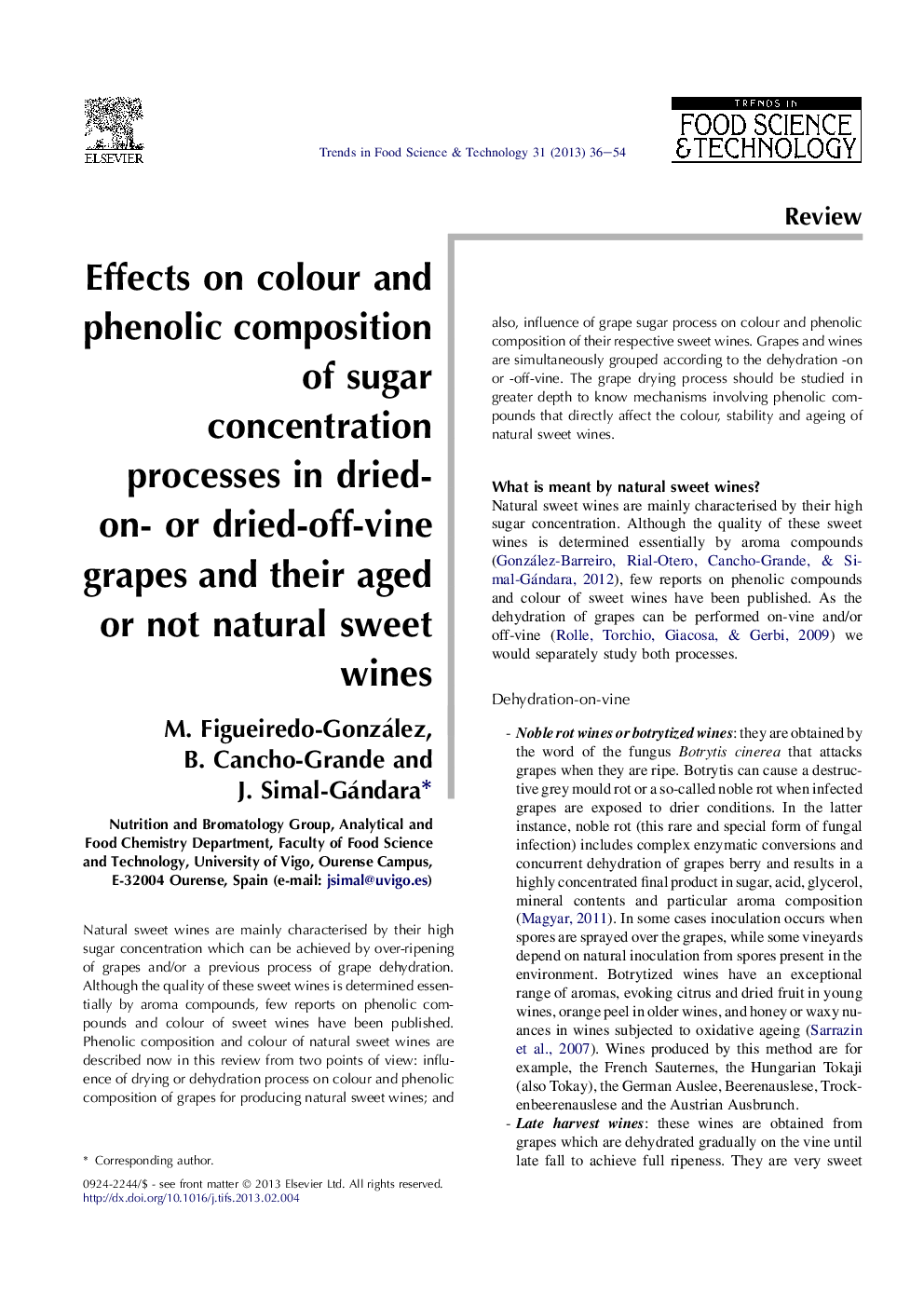| Article ID | Journal | Published Year | Pages | File Type |
|---|---|---|---|---|
| 2099850 | Trends in Food Science & Technology | 2013 | 19 Pages |
Natural sweet wines are mainly characterised by their high sugar concentration which can be achieved by over-ripening of grapes and/or a previous process of grape dehydration. Although the quality of these sweet wines is determined essentially by aroma compounds, few reports on phenolic compounds and colour of sweet wines have been published. Phenolic composition and colour of natural sweet wines are described now in this review from two points of view: influence of drying or dehydration process on colour and phenolic composition of grapes for producing natural sweet wines; and also, influence of grape sugar process on colour and phenolic composition of their respective sweet wines. Grapes and wines are simultaneously grouped according to the dehydration -on or -off-vine. The grape drying process should be studied in greater depth to know mechanisms involving phenolic compounds that directly affect the colour, stability and ageing of natural sweet wines.
► Total phenols increase by effect of water loss and the strong water stress. ► Noble rot grapes: trans-astringin, trans-resveratrol, trans-piceid and pallidol increase. ► There is degradation of phenolic acids during sun-drying of grapes. ► The proanthocyanidin average degree of polymerization decrease during dehydration. ► Esters of hydroxycinnamic acids were degraded due to their oxidation by PPOs.
